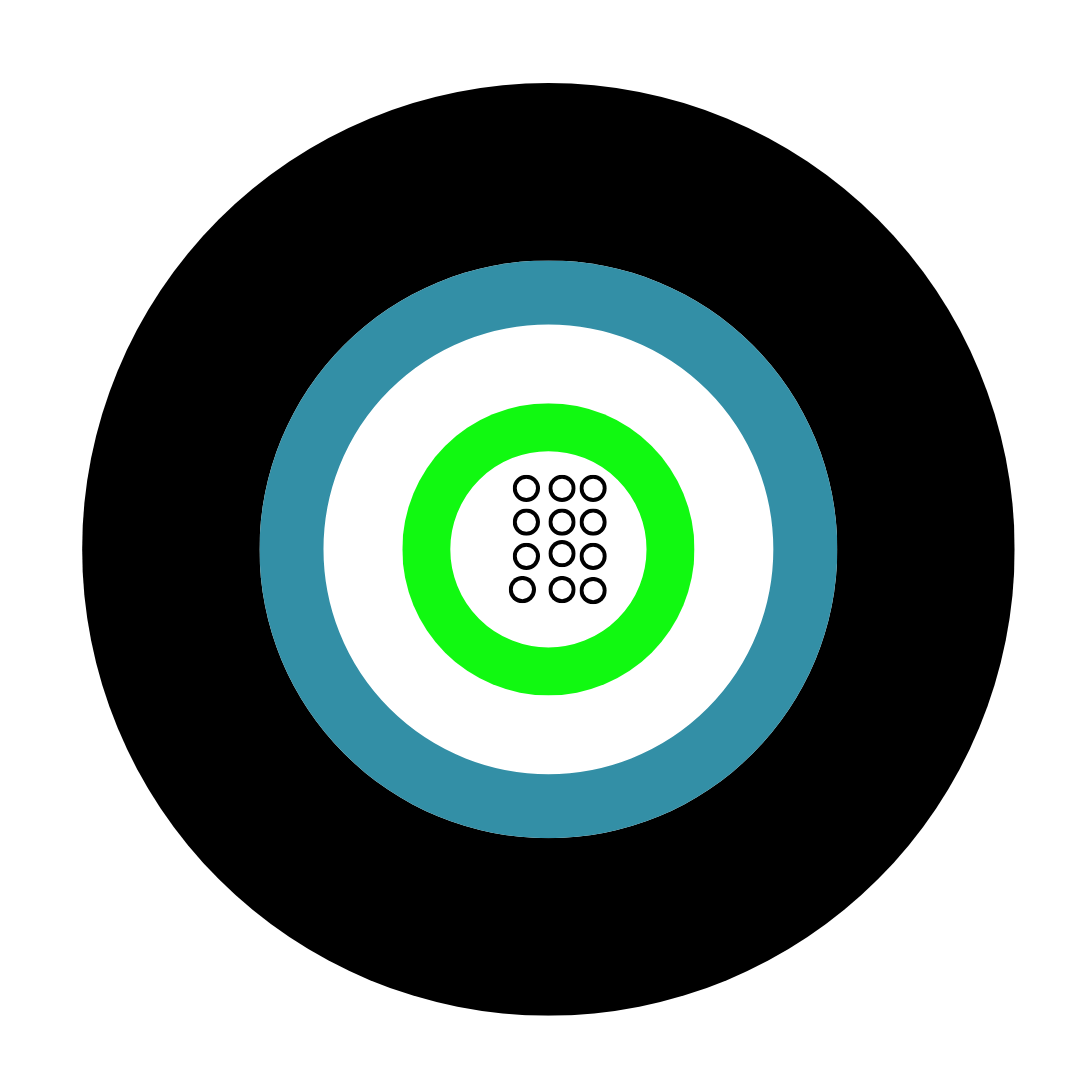Moisture is a hidden danger for electrical cables, causing corrosion, insulation breakdown, and even system failures if left unchecked. When water enters a cable, it weakens its performance, shortens its lifespan, and increases the risk of electrical faults or fire. Even small amounts of moisture, whether from humidity, rain, or damaged insulation, can silently damage internal components and create costly problems for homes and businesses.
Protecting cable systems starts with knowing the risks and spotting early signs of damage, such as discolouration or cracked sheathing. Good installation practices and using moisture-resistant materials are key steps to keep cables dry and reliable. By staying vigilant and maintaining cable infrastructure, anyone can reduce the risk of unexpected downtime or hazards.
Key Takeaways
Moisture inside cables can cause serious damage and failures
Early detection and prevention are critical for safe, reliable systems
Quality cables and proper installation protect against moisture problems
Why Moisture Is a Problem for Cabling
Moisture inside cables can quickly lead to equipment failure, safety risks, and signal problems. Water damages cables from the inside, causing faults that are often hard to spot until a serious issue occurs.
What Happens Inside a Wet Cable (Insulation Breakdown, Shorting, Corrosion)
When water enters a cable, it can break down the insulation layer. This makes it easier for electricity to leak, resulting in short circuits or electrical arcing. Over time, even a small amount of moisture weakens the insulating material.
Corrosion is another issue. Metal conductors inside the cable can rust or oxidise when exposed to water. This increases electrical resistance, leading to overheating or complete failure. Signal cables may also show higher signal loss and interference, as wet cables absorb more electrical energy.
The following problems are commonly observed:
Fault | Effect |
Insulation loss | Short circuits, arcing, safety hazard |
Corrosion | Overheating, broken connections |
Attenuation rise | Poor signal, low performance |
Common Ways Water Gets Into Cable Runs (Groundwater, Condensation, Poor Seals)
Cables can become wet in different ways. Underground runs are often exposed to groundwater, especially if drainage around the site is poor. This water may seep into joints or damaged parts of the cable sheath.
Condensation is another source of moisture, especially where there are rapid temperature changes. Moisture in the air can collect on cold cable surfaces and drip into cable terminations and connectors.
Incomplete or damaged seals at the cable ends allow water to enter. Cracked cable sheaths can also let water in over time. Poor work during installation, such as leaving ends open to weather, makes moisture problems more likely. Regular checks and using proper sealing materials can help avoid these issues.
Spotting Early Signs of Moisture Damage
Moisture can harm cables in several distinct ways, long before major failures occur. By understanding the first warning signs, one can take action to protect cables and prevent larger problems.
Loss of Signal or Increased Resistance
A common indicator of moisture intrusion is a gradual loss of signal in data cables or rising electrical resistance in power lines.
This often happens because water changes the cable’s electrical properties. Signals may become weak, fuzzy, or cut out entirely. For data cables, this can mean slower internet, frequent disconnects, or failures in network connections. For power cables, resistance can cause reduced efficiency and an increase in energy loss.
Technicians may notice unexplained voltage drops or inconsistent current flow. Using a multimeter, they might see resistance values above normal. In coaxial cables, moisture can change the dielectric constant, distorting signals, creating noise, and reducing data reliability.
Warning Signs Table:
Symptom | Possible Cause |
Weaker signals | Moisture inside cable |
Dropouts/disrupts | Water at connectors |
Higher resistance | Damp insulation/sheath |
Prompt testing can spot these changes early before larger faults develop.
Visible Corrosion or Swelling in Sheath
Visually checking cables is a key way to spot moisture damage.
Corrosion may look like greenish, whitish, or rusty patches along connectors or on exposed copper. Swelling, blistering, or cracks may appear on the sheath or insulation where water has entered. If the cable jacket feels soft, has changed colour, or displays unusual bulges, it could be due to trapped moisture.
These physical changes often start near cable ends, joints, or areas exposed to damp. Over time, damage will spread and weaken the cable’s structure, leading to complete failure if untreated.
It is important to inspect cables in high-moisture areas, such as basements, outdoor junctions, and underground installations, frequently.
Look for:
Careful inspection is one of the fastest ways to catch problems before they escalate.
Intermittent Faults and Overheating
Moisture does not always cause immediate, constant problems. Sometimes, issues appear only now and then as intermittent faults.
These faults can include unexpected resets, flickering power, short surges, and random equipment shutdowns. As water seeps further into a cable, short circuits may occur, increasing the risk of sparks or small electrical arcs. Over time, this can create hotspots along the wire.
Cables with hidden moisture often get warmer than usual during use, sometimes hot to the touch. Persistent overheating can melt insulation, deepen faults, and shorten the cable’s life. In severe cases, excess heat combined with electrical faults raises the fire risk.
Electricians can use thermal imaging cameras to spot overheating hotspots on cable runs. Addressing these issues quickly is key to ensuring safe, reliable performance.
Choosing Cables That Stand Up to Damp Conditions
Selecting the right cable is crucial when moisture is present, as water can cause insulation breakdown and electrical hazards. Key factors include choosing the correct cable type, the use of physical protection, and appropriate outer jacket materials.
Moisture-Resistant and Water-Blocked Cable Types
Some cables are designed specifically to handle moist or wet environments. Moisture-resistant cables have special insulation that keeps water out, reducing the risk of short circuits or corrosion. For even harsher conditions, water-blocked cables include extra barriers or gels inside. These barriers stop water from moving along the cable if moisture does get in at any point.
There are various levels of protection classified by standards such as AD3 (protection against water droplets) to AD8 (total water immersion). AD8-rated cables, like the POWERFLEX RV-K or XTREM H07RN-F, can handle being underwater for long periods.
Installers should look for cables with high AD ratings when working in places like basements, outdoor installations, or near water bodies. Choosing the correct type ensures both safety and longevity.
Armoured Options and When to Use Them
Armoured cables offer another layer of defence against harsh, damp environments. These cables have a metal sheath beneath the outer jacket, which protects the inner conductors from crushing, physical damage, and rodent attacks.
Armoured cables are useful in areas where cables are buried underground, exposed to temporary flooding, or subject to heavy use, such as in construction or outdoor power supply. For example, power lines crossing wet fields or running under car parks often use armoured cable.
While armoured cable adds cost and weight, it greatly increases protection in wet conditions. However, in simple indoor damp spaces, armouring might not be necessary if a suitable water-resistant cable is already chosen.
Jacket Materials That Repel Water
The cable's outer coating, or jacket, makes a big difference in wet environments. Jackets made of materials like cross-linked polyethylene (XLPE), polyurethane, or high-grade rubber are strongly water-repellent.
Polyvinyl chloride (PVC) is common but less resistant to long-term water exposure compared to XLPE or thermoplastic elastomers. For outdoor, underwater, or industrial use, materials like XLPE or rubber are recommended due to their water-blocking abilities, flexibility, and resistance to UV and chemicals. Below is a simple comparison:
Jacket Material | Water Resistance | Flexibility | UV/Weather Resistance |
PVC | Moderate | Good | Fair |
XLPE | High | Moderate | Good |
Rubber | High | Excellent | Excellent |
Choosing the right jacket material helps prevent moisture from reaching the inner wires and increases the life of the cable. Always check material ratings before installation, especially in damp or outdoor areas.
Installation Steps to Keep Water Out
To prevent moisture from damaging cables, careful installation practices must be followed. Key steps include using the right sealing methods, planning the cable route to prevent water pooling, and applying barriers or drainage measures outdoors or underground.
Proper Sealing at Entry Points with Glands and Boots
Cables often enter enclosures, junction boxes, or buildings through openings that can let in moisture if not properly sealed. Using cable glands is a standard way to create a watertight seal at these entry points. These glands fit tightly around the cable and press against the surface of the enclosure, preventing water from leaking inside.
Rubber boots or protective sleeves serve as additional barriers against moisture. For outdoor or industrial settings, it’s important to use glands and boots rated for the level of water exposure expected, such as IP67 or IP68 ratings for environments that face heavy rain or immersion.
Installers should check the tightness and integrity of every seal. Damaged or incorrectly fitted glands are a common failure point. Routine inspection and timely replacement of worn boots or seals can prevent future leaks.
Correct Routing and Avoiding Low Spots Where Water Pools
Cable runs should be planned to prevent water collecting along the route. A common mistake is routing cables through low spots or dips, which can act as traps where water collects and seeps into the sheath over time. Instead, cables should have a gentle slope away from entry points or be clipped above potential water levels.
Routing tips:
Elevate cable trays where flooding could occur.
Avoid crossing depressions or areas known to flood.
Provide opportunities for drainage if a low spot cannot be avoided, such as drilling small weep holes in conduit—provided safety and code allow.
Regular inspections of cable routes will catch issues with pooling water early, helping extend cable life and reduce maintenance. Understanding the landscape and possible water entry points is essential during the initial planning phase.
Using Barriers and Drainage for Outdoor or Buried Runs
For cables installed outdoors or underground, barriers and drainage systems are vital. Waterproof tapes, water swellable tapes, and special compounds can be applied in and around cables to block longitudinal water travel. Protective sheaths made of materials like HDPE or metals such as aluminium provide good radial water blocking capabilities.
Trenches for buried cables should have drainage layers, like sand or gravel, beneath and around the cable to prevent water accumulation. In heavy rainfall areas, french drains or similar structures may be needed to redirect surface water away from the installation.
Junction boxes and terminations in outdoor settings should be raised above ground level wherever possible. This extra height keeps connections above surface water and reduces the risk of moisture intrusion. By combining physical barriers and effective drainage, outdoor cable installations can better resist moisture-related failures.
Protecting and Maintaining Your Cable System
Effective cable maintenance requires regular checks, prompt repairs, and control of the environment around the cables. These steps help keep cables dry, safe, and reliable for longer periods.
Regular Inspection and Moisture Testing
Routine inspections reveal early signs of moisture problems or damage. Inspect cables for cracks, wear, or discolouration. Focus on connections and joints, as these are common entry points for water.
Use moisture meters or insulation resistance testers to check for hidden dampness. Test both exposed and buried cables, especially after heavy rain or if the cables are in humid locations. If readings fall outside safe ranges, investigate further before damage spreads.
Regular testing brings peace of mind and allows small issues to be fixed before they turn into bigger hazards. Keep detailed inspection records, noting locations, test results, and action taken. Scheduled checks are key to preventing long-term issues and ensuring safety.
Fixing Leaks, Re-Sealing Joints and Replacing Damaged Sections
If moisture is found, immediate action is needed to stop it from causing corrosion or short circuits. Begin by identifying leak points, such as torn insulation or loose connectors. Clean and dry the affected area before making any repairs.
Re-seal joints with proper waterproof materials. Use heat-shrink tubing or waterproof tapes to cover exposed wires and connectors. For underground cables, choose seals made for wet conditions. If a cable section is badly waterlogged or corroded, it is safer to replace it instead of repairing.
Check the work by re-testing for moisture after repairs. Well-sealed joints and quick replacement of damaged sections greatly lower the risk of future failures.
Environmental Controls to Reduce Condensation
Environmental controls make a big difference when cables are installed in damp or humid areas. Reducing condensation around cable systems helps keep them dry and functional.
Key measures include:
Using dehumidifiers in rooms where moisture collects.
Improving airflow with fans or vents.
Installing cables above ground level to keep them from water pooling.
Choosing cable trays and enclosures with waterproof finishes.
Temperature control also matters. Insulated cable trays reduce sudden temperature changes which can cause condensation to form. In outdoor or underground settings, use special drainage or waterproof barriers to keep cables dry. Regular monitoring of humidity levels ensures the environment stays safe for electrical cables.
Frequently Asked Questions
How to protect cable from moisture?
Cables should be installed using high-quality, moisture-resistant types when possible. Weatherproof enclosures, proper sealing of joints, and regular inspections can help stop water from entering. Keeping cables above ground or using conduit for buried lines reduces risk. In areas with high humidity or frequent rain, additional protective coatings or gel-filled cables may be used.
How to get moisture out of a cable?
If moisture is detected early, disconnect the cable and let it dry in a warm, low-humidity place. Using silica gel packs or similar drying agents can speed up the process. For most power and communication cables, especially if they are heavily affected, replacement is often the safer choice due to hidden damage not visible to the eye.
What effect does moisture have on the properties of the load cable insulation?
Moisture lowers the resistance of cable insulation, which can lead to short circuits and electric shocks. Water within the insulation also speeds up ageing, causing the insulation to become brittle or crack over time. Corrosion of the cable's conductor can also start, making the entire wire less safe and reliable.
What happens if a cable gets wet?
A wet cable may stop working properly and could become unsafe. Problems include increased electrical resistance, unexpected faults, corrosion of the metal inside, and sometimes complete failure of the cable. If live, there is also a risk of short circuits or fires, depending on the voltage and type of cable.
How to dry a wet cable?
Unplug or disconnect the cable before drying. Wipe off any surface water and allow it to air dry in a warm, dry place. Do not use the cable again until certain it is fully dry inside and out. Any sign of corrosion, swelling, or a burnt smell means it should be replaced.
What happens if coax cable gets wet?
Moisture inside a coaxial cable increases signal loss and reduces performance. Over time, water can corrode the shield and centre conductor, causing sudden drops in quality. Affected coax cables generally do not recover even after drying, and usually need to be replaced to restore signal strength.
Does fibre optic get affected by rain?
Rain does not directly harm the glass inside a fibre optic cable, but water entry can damage connectors and the protective coatings. Wet connectors increase signal loss and can permanently affect performance if not dried quickly. Outdoor fibre cables are usually well-sealed, but poor installations and damaged jackets are weak points for water ingress.
Alarm Cable
Arctic Grade Cable
Armoured Cable
Audio & Speaker Cable
Auto Cable
Bare Copper
Belden Equivalent Cable
Co-axial Cable
Data Cable
DC Telecom Cable
Defence Standard Cable
Emergency Lighting & Fire Detection Cable
EV Cable
Festoon
![Loose Tube Fibre Cross Section]()
Fixed Wiring PVC & LSOH Cable
Flatform
Flexible Control Cable
Flexible PVC Cable
Flexible Rubber Cable
General Wiring Cable PVC & LSOH
High Temperature Cable
High Voltage Cable
![5308 p1 t2 cat Cross Section]()
LSOH Flexible Cable
Medium Voltage Cable
NYY & N2XH Cable
Protected Wiring Cable
Silicone Cable
Solar Cable
Split Concentric Cable
Spiral Cable
Temporary Power Cable
Tri-Rated Cable
Welding Cable
Alarm Cable
Arctic Grade Cable
Armoured Cable
Audio & Speaker Cable
Auto Cable
Bare Copper
Belden Equivalent Cable
Co-axial Cable
Data Cable
DC Telecom Cable
Defence Standard Cable
Emergency Lighting & Fire Detection Cable
EV Cable
Festoon
![Loose Tube Fibre Cross Section]()
Fixed Wiring PVC & LSOH Cable
Flatform
Flexible Control Cable
Flexible PVC Cable
Flexible Rubber Cable
General Wiring Cable PVC & LSOH
High Temperature Cable
High Voltage Cable
![5308 p1 t2 cat Cross Section]()
LSOH Flexible Cable
Medium Voltage Cable
NYY & N2XH Cable
PAS - BS5308 Instrumentation Cable
Protected Wiring Cable
RS-232 Cable
RS-485 Cable
Silicone Cable
Solar Cable
Split Concentric Cable
Spiral Cable
Telephone Cable
Traffic Signal Cables
Temporary Power Cable
Tri-Rated Cable
Welding Cable
Airports
Automation & Process Control
![Automotive]()
Building & Construction
Communication & Telecommunication
Data Centres
Defence
![DNO 1]()
E-Mobility
Food & Beverage
Marine & Offshore
Mining, Drilling & Tunnelling
OEMs
Oil, Gas & Petrochemical
Rail & Metro
Renewable Energy
Switchgear
Power
Water Treatment













































